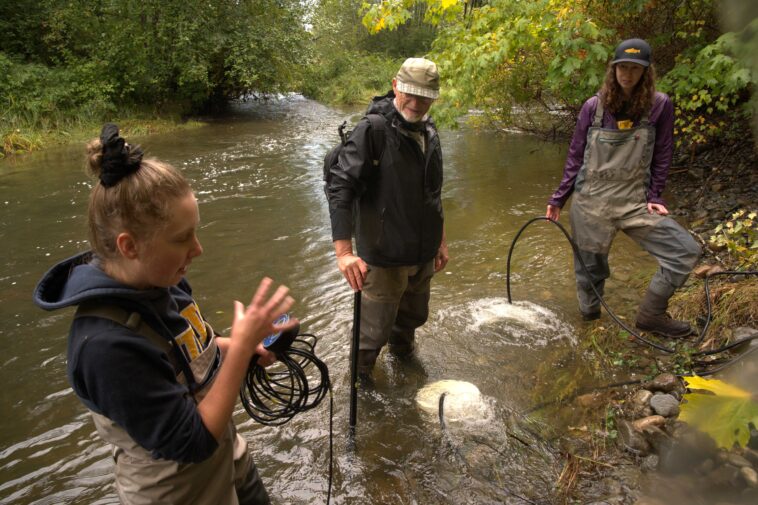BC faced an unprecedented drought this summer, leaving streams and rivers parched and salmon populations suffering the consequences. However, a new pilot project by the Pacific Salmon Foundation (PSF) is testing out innovative solutions that could save BC salmon in the direst of situations. The PSF’s Climate Adaptation program has mobilized ‘salmon SWAT’ teams consisting of on-the-ground emergency responders who are charged with finding unique ways to save the salmon barely surviving in dried-up freshwater habitats. West Coast Now spoke with Jane Pendray, Manager of PSF’s Salmon and Climate Adaptation Program, about the ingenuity of the salmon SWAT teams that have been dispatched across BC and why they’ve never been more needed than now.
Drought Spells Trouble for Salmon
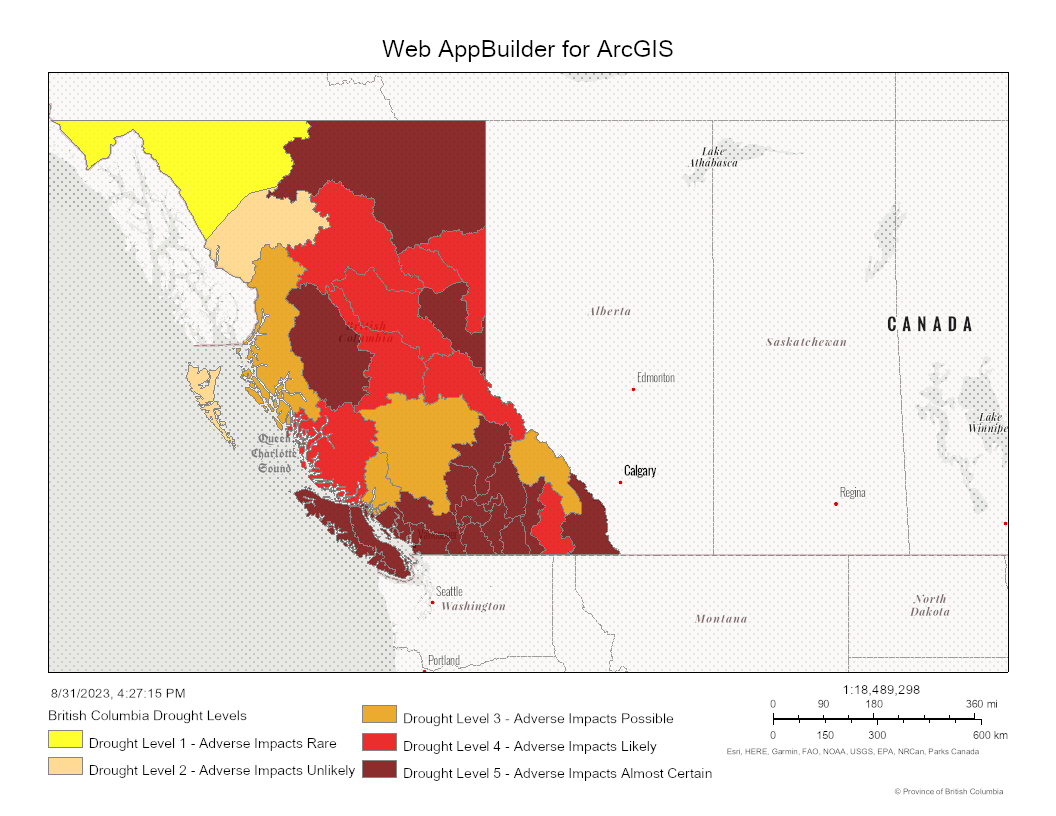
Early in the summer, as most of the province was trending towards Level 4 and 5 Drought conditions, the team at the Pacific Salmon Foundation met with BC officials and Fisheries and Oceans Canada (DFO) to discuss the increasingly troubling impact that dry conditions were having on salmon. The collaborative response group met twice a week throughout the season to focus on the most concerning hotspots where juvenile salmon and adult spawners were likely to face mass die-offs.
First Nations and local fisheries organizations brought the most pressing problems to the working group, as they were seeing first-hand how rivers were drying up and salmon dying off. “We worked together to identify particular areas and locations where the drought effects were having a hazardous effect on salmon,” said Jane Pendray, PSF Program Manager. “We would then try to see if we could find solutions with local organizations who could really be the boots on the ground and activate them as a project.”
“Drought response for salmon has never been needed at this kind of province-wide coordinated scale before because there’s never been drought at that scale before.”
Jane Pendray, Program Manager of the Pacific Salmon Foundation
The community organizations formed ‘salmon SWAT’ teams or emergency response crews coordinated by PSF. With contributions from the provincial government, the rapid response working group distributed funds to over a dozen projects that could take rapid action to save endangered fish. This type of collaborative response network was unusual, but an extraordinary drought season required extraordinary measures. “Drought response for salmon has never been needed at this kind of province-wide coordinated scale before because there’s never been drought at that scale before,” commented Pendray.
Unusual Solutions
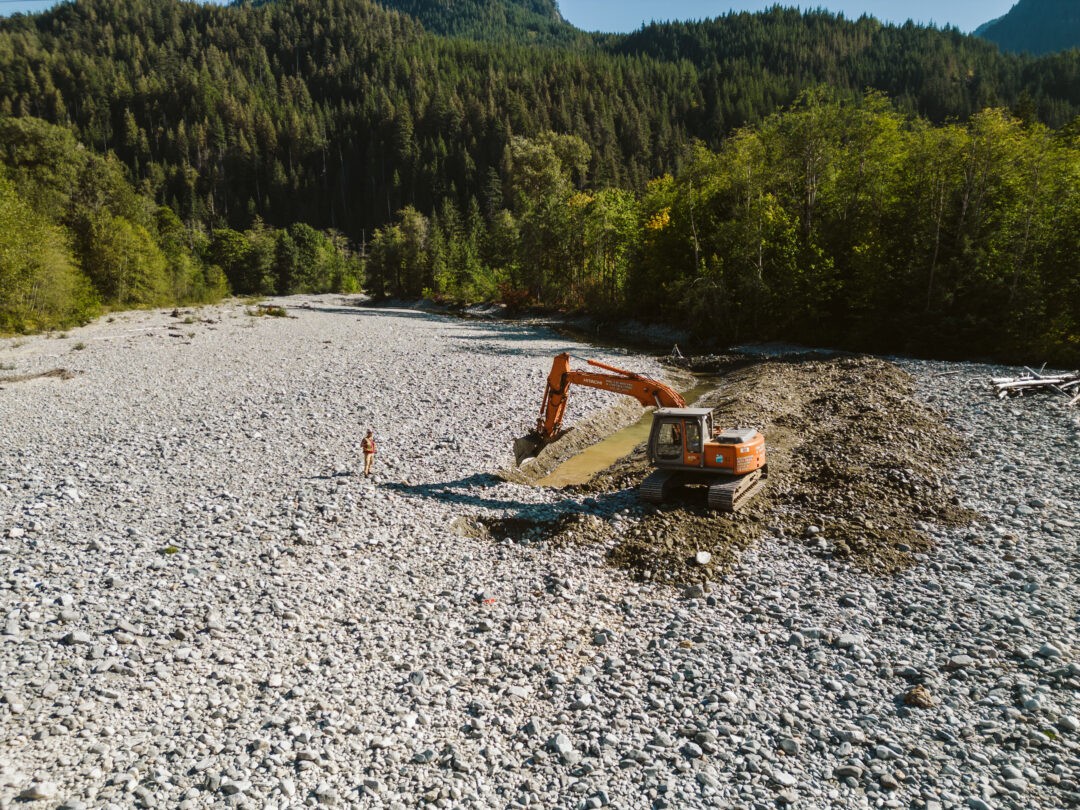
The turn-around time for the SWAT teams was remarkably fast. For example, in September, a 100-metre area of the Indian River had run dry, barely trickling through the gravel, with no surface flow for salmon to swim along. “Tens of thousands of pink salmon were trying to return to their spawning grounds and just reached the section of the stream where it was completely dry,” Pendray told us. The Tsleil-Waututh Nation brought the problem to PSF, and together, they rapidly undertook what she called “a fairly large-scale engineering project.” Within days, they had funded a team of community members to bring an excavator to the site and dig a trench to reconnect the stream. Thousands of salmon were saved because they were able to migrate upstream and spawn, continuing to reproduce future populations.
“Tens of thousands of pink salmon were trying to return to their spawning grounds and just reached the section of the stream where it was completely dry.”
Jane Pendray, Program Manager of the Pacific Salmon Foundation
Another innovative project was implemented on a dry river on eastern Vancouver Island. In July, the Tsolum River near Courtenay hit Level 5 on the drought scale, meaning “adverse impacts on both communities and ecosystems are almost certain.” High water temperatures and low water flows were endangering juvenile salmon and returning spawners in the area. This resulted in critically low oxygen levels in the refuge pools where salmon gather, which could lead them to suffocate to death. Two years ago, a massive coho die-off had taken place in the same location, and experts were worried that the same thing could happen again.
The Tsolum River Restoration Society (TRSS) approached the PSF to collaborate on a creative solution. They proposed testing aeration systems in the river that would get much-needed oxygen to the struggling salmon. Aeration units are typically used in closed tanks like aquariums, not in the wild, but the team was ready to try anything. With the support of the K’omokss First Nation and DFO, they installed solar- and generator-powered aeration units into the refuge pools. The aerators then released steady streams of bubbles into the water, saturating it with oxygen for the salmon.
“They were able to actually increase the dissolved oxygen level in the streams and improve conditions for the spawning salmon that were returning,” Pendray told us, measuring 25-30% increases in oxygen in the water. “That’s never been implemented in BC on that scale in a wild stream of that kind.”
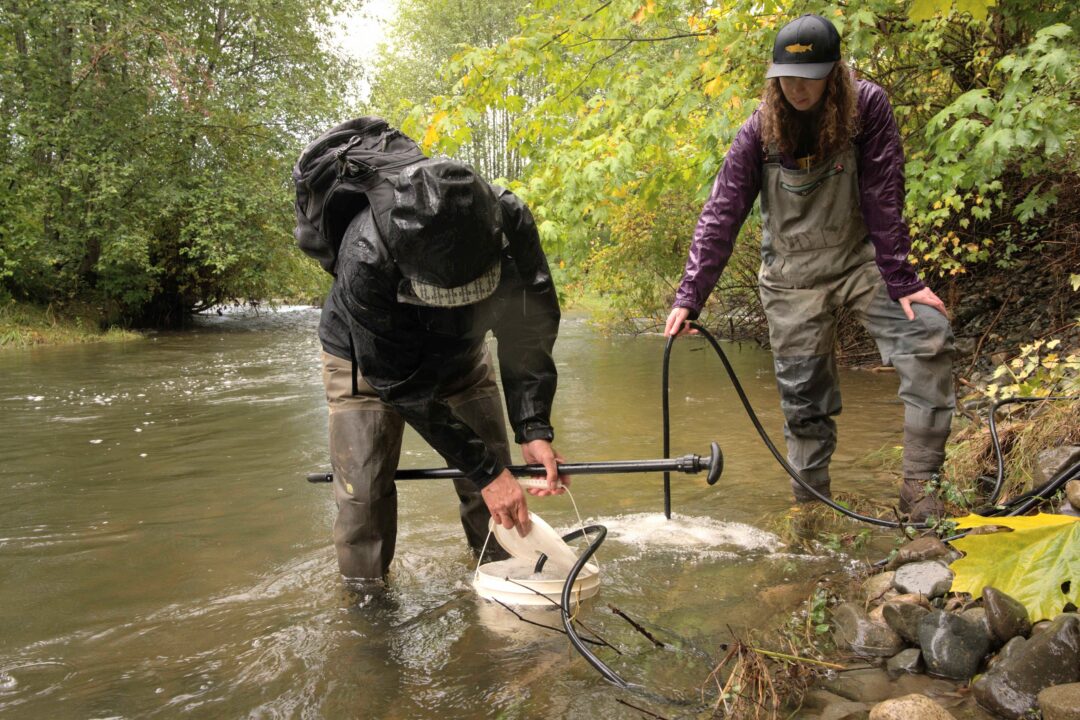
Thankfully, rainfall descended soon after and raised water levels before a massive amount of pink salmon arrived in the Tsolum River. Yet the success of this unusual fix acted as a kind of ‘proof of concept’ technique, she said. The TRRS is now looking at doing more tests and developing this as a possible tool for future drought scenarios. “We’re hopeful to be able to just expand solutions that are available for responding to drought, for salmon,” Pendray explained.
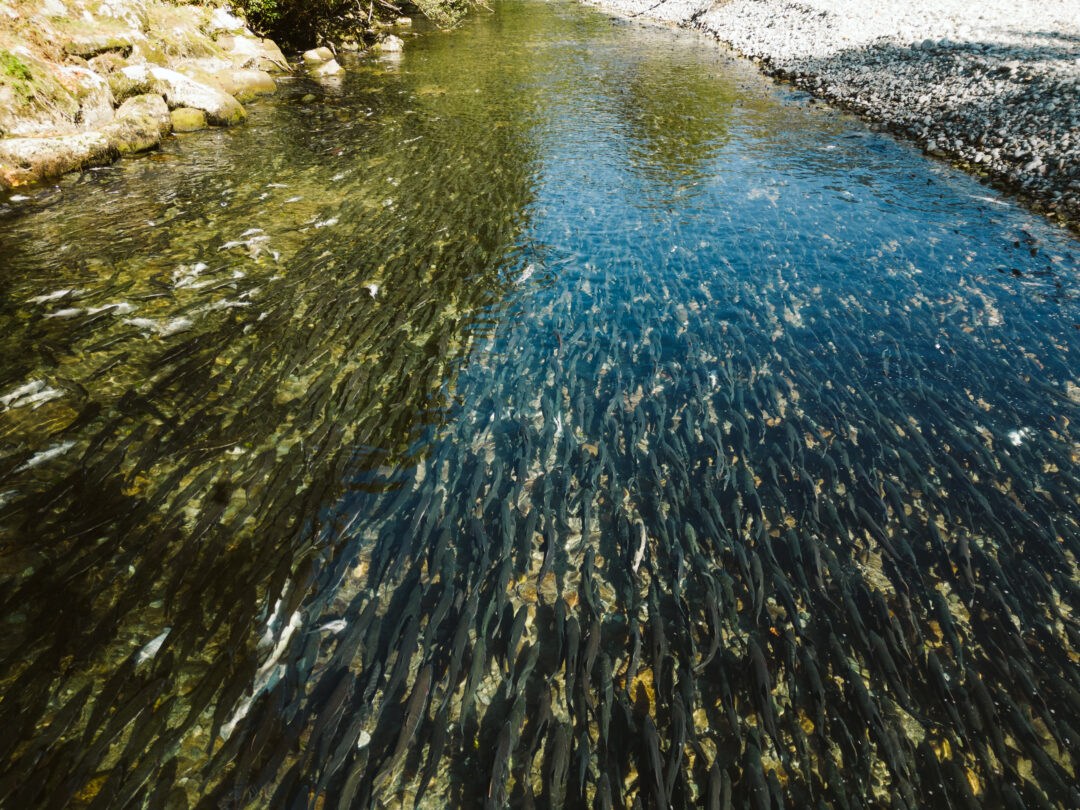
Other successful salmon SWAT team projects included a Coldwater River response near Merritt, led by Scw’exmxx Tribal Council and DFO. Their crews worked to build dry gravel bars that created refuge areas for the large amounts of salmon migrating through the area. On the Tranquille River near Kamloops, local partners, including the Secwepemc Fisheries Commission, re-established the water flow from the River to Kamloops Lake by repairing the dried-up habitat with an excavator. This emergency action took place in early September, just in time for local salmon returning to the area.
Stop-gap Measures
Pendray recognizes that even though the SWAT teams and their urgent measures have been effective, they aren’t a substitute for larger changes needed to prevent the level of widespread drought the province is facing. “We would really like to be moving away from this kind of emergency response SWAT team or ‘ambulance salmon’ approach to a more strategic response [for] salmon and climate change,” she said. Taking a longer-term approach to supporting watershed resilience and improving water retention on the landscape, she explained, could maintain healthier water levels for salmon and humans.
“We would really like to be moving away from this kind of emergency response SWAT team or ‘ambulance salmon’ approach to a more strategic response [for] salmon and climate change.”
Jane Pendray, Program Manager of the Pacific Salmon Foundation
Nevertheless, Pendray is pragmatic, knowing that drought is forecasted to be a continuing issue in the province as climate change worsens. “I would like to think that we’ll be able to plan a more strategic response and that these kinds of emergency actions won’t be needed. But I think that realistically these kinds of emergency responses will still be needed on some level in the future.” Her organization, she told us, is dedicated to being at the forefront of those responses.
“This is a bit of a pilot year [for] figuring out this new model of working together with the provincial and federal governments on this process. We’re going to see what lessons can be learned from that, and it may end up happening the same way next year, or in a bigger and better model,” she said.

The partnerships PSF established with community organizations monitoring the salmon populations in the wild were the key to that success. “This work was about bringing those partners together with people who have different skills … working with those community partners who have the eyes on the ground to identify the issue and then are able to put boots on the ground to implement solutions. That is super valuable,” he said.
Take Action
Pendray hopes that this unique network of ecological problem-solvers reminds the wider public that there is always action that can be taken to look after our natural world. “I you try to think outside the box with these more creative solutions and try to think on a broader scale … solutions can be implemented, and I think that we’ll see more and more of this going forward.”
SF has even launched a drought reporting tool for vigilant community members who are keeping an eye on their streams. If you notice dry conditions are impacting your local salmon habitat or suspect they might be impeding salmon migration, PSF encourages you to observe, document, and report it through this link: https://psf.ca/report/.





